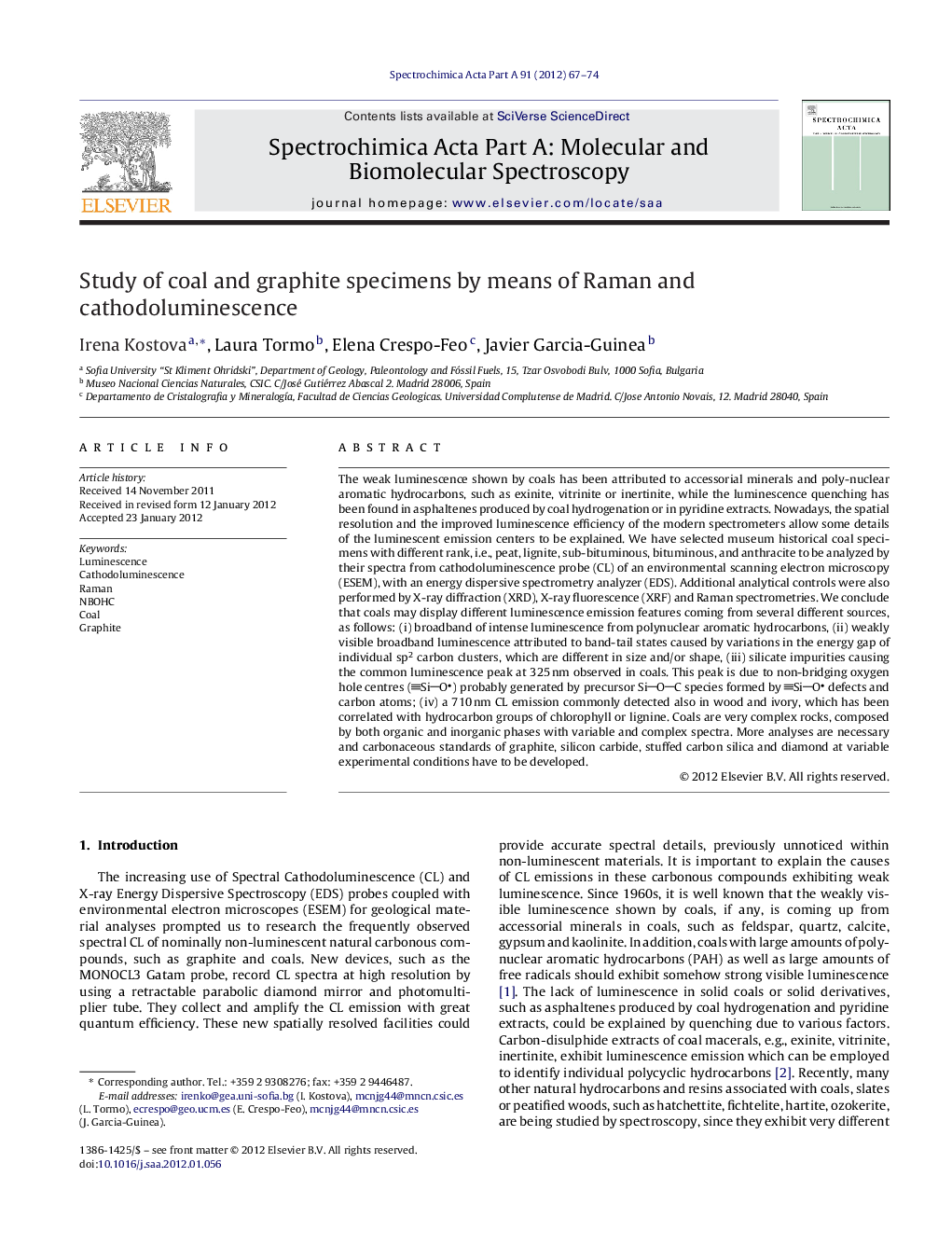| Article ID | Journal | Published Year | Pages | File Type |
|---|---|---|---|---|
| 1232987 | Spectrochimica Acta Part A: Molecular and Biomolecular Spectroscopy | 2012 | 8 Pages |
The weak luminescence shown by coals has been attributed to accessorial minerals and poly-nuclear aromatic hydrocarbons, such as exinite, vitrinite or inertinite, while the luminescence quenching has been found in asphaltenes produced by coal hydrogenation or in pyridine extracts. Nowadays, the spatial resolution and the improved luminescence efficiency of the modern spectrometers allow some details of the luminescent emission centers to be explained. We have selected museum historical coal specimens with different rank, i.e., peat, lignite, sub-bituminous, bituminous, and anthracite to be analyzed by their spectra from cathodoluminescence probe (CL) of an environmental scanning electron microscopy (ESEM), with an energy dispersive spectrometry analyzer (EDS). Additional analytical controls were also performed by X-ray diffraction (XRD), X-ray fluorescence (XRF) and Raman spectrometries. We conclude that coals may display different luminescence emission features coming from several different sources, as follows: (i) broadband of intense luminescence from polynuclear aromatic hydrocarbons, (ii) weakly visible broadband luminescence attributed to band-tail states caused by variations in the energy gap of individual sp2 carbon clusters, which are different in size and/or shape, (iii) silicate impurities causing the common luminescence peak at 325 nm observed in coals. This peak is due to non-bridging oxygen hole centres (SiO) probably generated by precursor SiOC species formed by SiO defects and carbon atoms; (iv) a 710 nm CL emission commonly detected also in wood and ivory, which has been correlated with hydrocarbon groups of chlorophyll or lignine. Coals are very complex rocks, composed by both organic and inorganic phases with variable and complex spectra. More analyses are necessary and carbonaceous standards of graphite, silicon carbide, stuffed carbon silica and diamond at variable experimental conditions have to be developed.
Graphical abstractFigure optionsDownload full-size imageDownload as PowerPoint slideHighlights► We apply CL-ESEM, XRD, XRF and Raman spectroscopy on the museums coal specimens. ► The coals may display different luminescence emission features coming from different sources. ► The main broadband of intense luminescence comes from polynuclear aromatic hydrocarbons. ► The weakly visible broadband luminescence is attributed to band-tail states caused by variations in the energy gap of individual sp2 carbon clusters. ► Silicate impurities seem responsible for the common luminescence peak observed in the coals.
